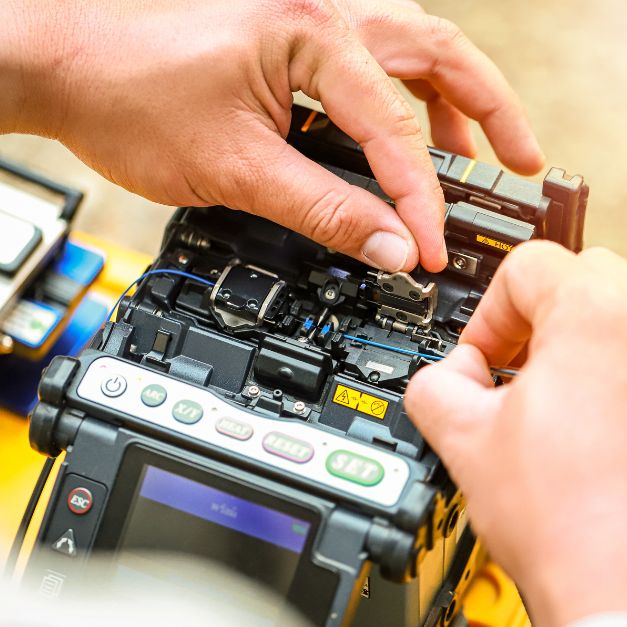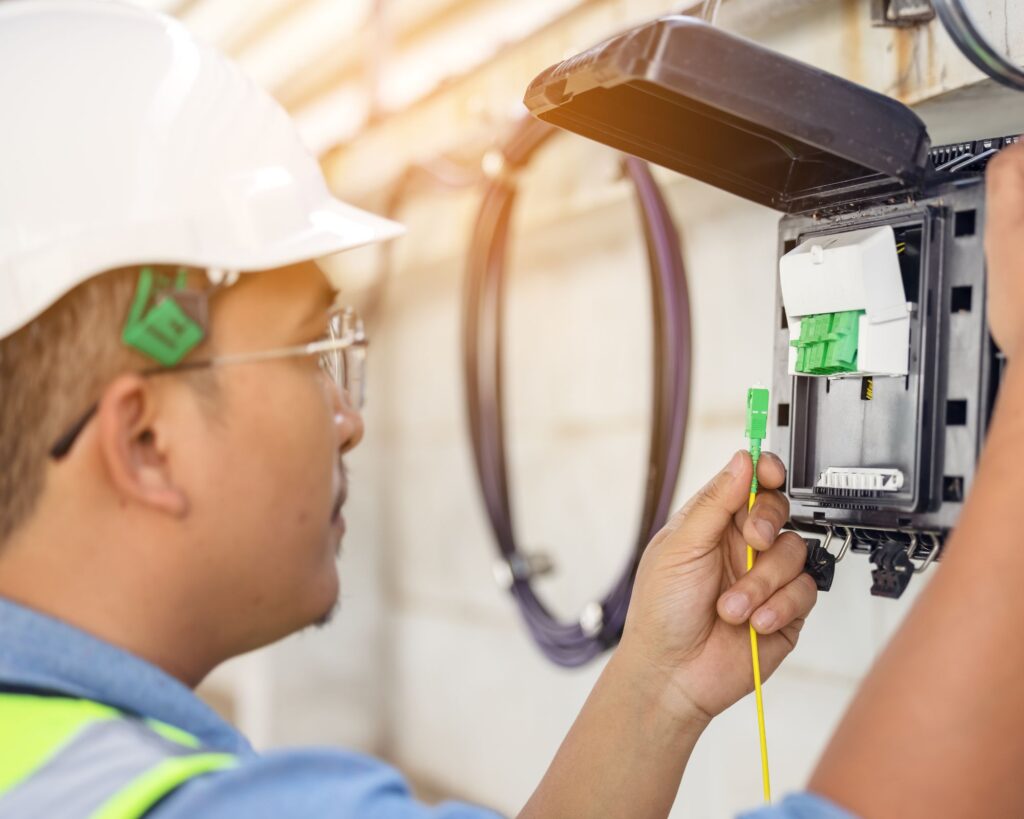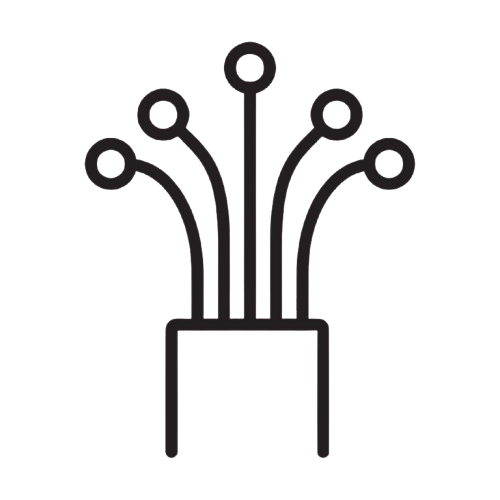Services.
The Ultimate Guide to Best Telecom Service Optical Fiber Splicing:
In today’s high-speed, interconnected world, optical fiber technology plays a critical role in enabling fast and reliable communication. Whether it’s for internet, cable television, or telephone systems, Telecom Line, optical fiber has become the backbone of modern telecommunication networks. One essential process that ensures seamless connectivity in fiber optic networks is optical fiber splicing..
The splicing process includes critical steps such as fiber preparation, which involves stripping the protective coating, cleaning, and cleaving the fibers to achieve smooth and perpendicular ends. Next, the fibers are spliced using the chosen method, followed by testing the splice to ensure proper alignment and minimal loss.




An OTDR is an instrument that sends pulses of light through an optical fibre and measures the backscattered or reflected light to determine the fibre’s characteristics. This process helps identify issues like breaks, bends, splices, or other defects in the fibre.An optical fibre closure (also known as a fibre optic splice closure or fibre optic enclosure) is a protective container used to safeguard the spliced fibres in an optical network. These closures ensure that the fibre optic splices are properly protected from environmental factors like moisture, dust, and mechanical damage.
How do fiber splicers test the quality of their connections?
Fiber splicers test the quality of their connections using specialized tools and techniques to ensure optimal performance and minimal signal loss. Telecom Service do One of the most common methods is the use of an optical power meter, which measures the amount of light transmitted through the fiber to detect any loss. Another tool, the optical time-domain reflectometer (OTDR), helps locate faults, breaks, or high-loss splices by sending pulses of light through the fiber and analyzing the reflected signals. Additionally, splicers visually inspect the fiber ends for cleanliness and proper alignment using a microscope before splicing. After the splice is completed, they perform tests to verify the splice quality and confirm that the connection meets industry standards for signal transmission and durability. These measures ensure the reliability and efficiency of the optical fiber network.

Our Services

Service & Maintenance
The team demonstrated exceptional skill in identifying weak splice points and realigning fibers with precision. Cable management was also tidy and organized

System Replacement
“Overall, the optical fiber system replacement exceeded expectations. The process was seamless, and the new system is delivering outstanding performance. Highly recommend this team for future projects

Fiber Installation
Fibre optic services leverage fibre optic technology to deliver high-speed, reliable, and secure data transmission

Testing and Commissioning
An OTDR is an instrument that sends pulses of light through an optical fibre and measures the backscattered or reflected light to determine the fibre’s characteristics. This process helps identify issues like breaks, bends, splices, or other defects in the fibre.

Design and Planning
Design and Planning of Optical Fiber Networks
Designing and planning an optical fibre network is a critical process that ensures the network’s performance, reliability, and scalability. The design and planning stages take into account various factors, from understanding the purpose of the network to selecting materials and ensuring the network’s future growth

Tools and Clouser Available
An optical fibre closure (also known as a fibre optic splice closure or fibre optic enclosure) is a protective container used to safeguard the spliced fibres in an optical network. These closures ensure that the fibre optic splices are properly protected from environmental factors like moisture, dust, and mechanical damage.
Serving In The Industry For Past 7 Years
Check Out Our Reviews Today!
Get 15% Discount On Your First Service
+91 98-99-626-288 +91 97-16-459-559

General Querries!z
What is optical fiber internet?
Optical fiber internet uses fiber-optic cables to transmit data using light signals. It provides faster speeds and higher reliability compared to traditional copper or coaxial cables.
How does fiber-optic internet work?
Fiber-optic internet works by sending pulses of light through tiny strands of glass or plastic fibers. These pulses represent data, allowing for high-speed transmission with minimal signal loss.
What are the advantages of optical fiber internet?
- Extremely fast speeds (up to 1 Gbps or more).
- Lower latency, ideal for gaming and video calls.
- Reliable performance even during peak usage.
- Resilient against electromagnetic interference.
- Supports multiple devices simultaneously.
How is optical fiber installed in homes?
Technicians run fiber-optic cables from the main distribution point to your home. Inside your home, an Optical Network Terminal (ONT) is installed to convert the light signals into internet data.
Can optical fiber be used for TV and phone services too?
Yes, many providers offer bundled services that include internet, TV, and phone over the same fiber-optic connection.
